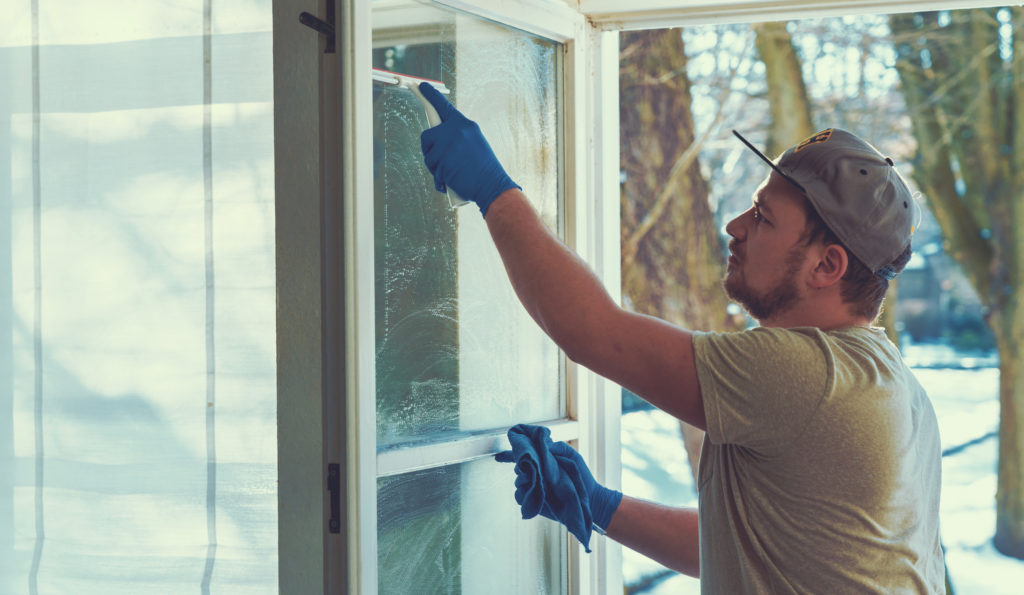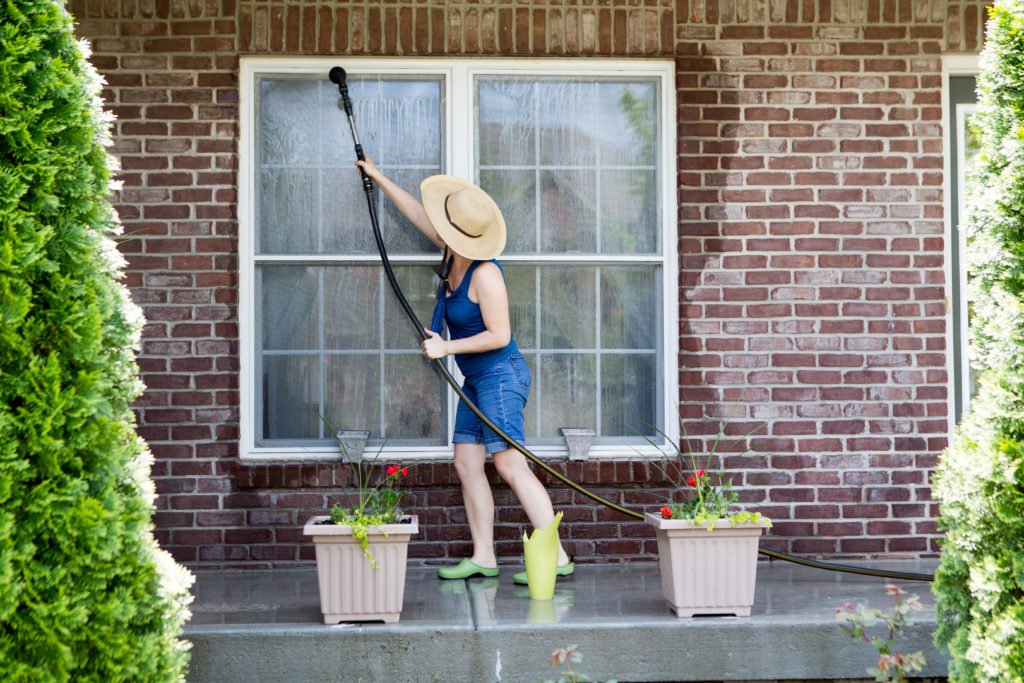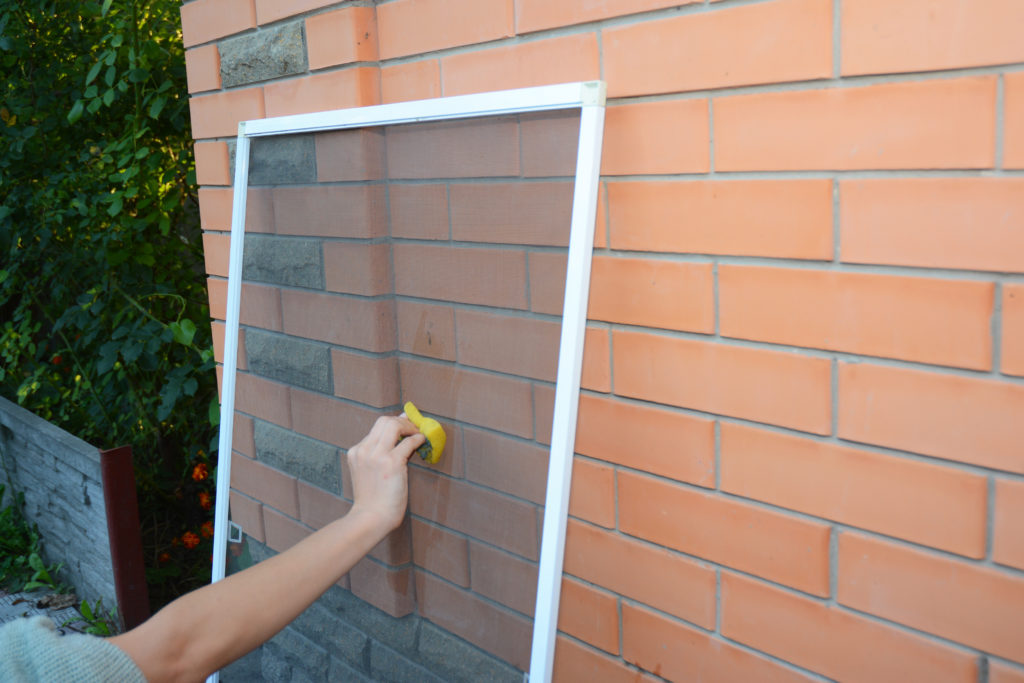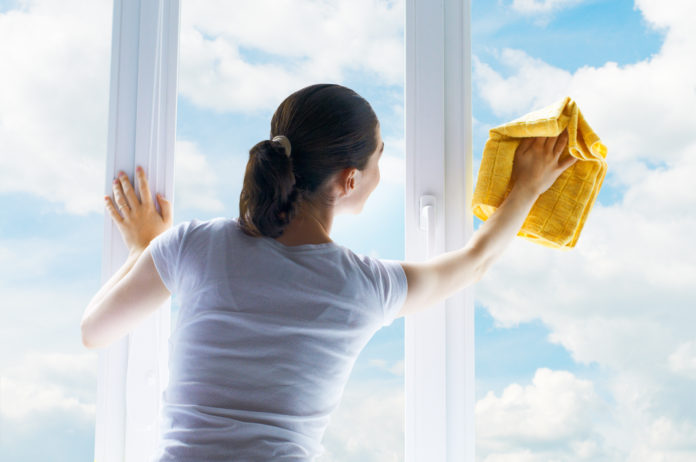The best way to make sure your home is market-ready is to maintain it on a regular basis. One of the annual tasks that many of us forget, but that greatly adds to the enjoyment of our habitat and quality of life, is washing our windows. Getting rid of the dirt that slowly accumulates on windows throughout the year, is the best way to let the sunshine in to your home.
It is easy to take our windows for granted. They are there when we need to look outside to see what the weather is doing. Or, on a perfect weather day, we might think about opening them to air-out the house. But day to day, it is hard to notice the gradual accumulation of dust and dirt sticking to the glass panes both inside and outside. If you don’t think your windows are dirty, you are probably wrong. Ideally, we would all wash our windows twice a year, but let’s be honest: most of us are lucky to get to it one time a year. You will be surprised how differently the sun shines through your windows after a thorough cleaning: the whole house will feel crisper and cleaner after a good window washing. While it might be slightly time consuming, you can easily tackle this home maintenance chore yourself with some basic tools and supplies. Of course, if you have some super high windows, you might need a special ladder, or alternatively, you will want to call in professionals to assist.

Why wash windows in the fall?
While many people prefer spring for washing windows to get rid of the excess pollen that accumulates quickly, if you don’t get to it until the fall, don’t stress: that accumulated pollen will still be there after the summer ends. Both fall and spring offer conditions that are ideal for washing windows, but make sure you follow these guidelines when scheduling your window-washing day:
- Window washing is best done when the outdoor temperature is between 64-70 degrees Fahrenheit.
- Wash windows AFTER you have had your gutters cleaned out, because debris from gutters can dirty-up windows
- A day that isn’t super sunny is best to minimize streaking
Are there “best practices” when it comes to window washing?
Many people will attest to their own best tricks when it comes to window cleaning, but there is more than one way to skin a cat. Don’t not wash your windows because you are searching for the best possible technique. As you continue to wash your windows year after year, you will continue to refine your own techniques for what works best for your home and your skill set. Before we get into the specific options of how to wash your windows, there are few general ideas you will need to consider as you design your strategy:
- Do your windows have screens? Even if you have double hung windows, you are also going to want to wash your screens when you wash your windows because screens get deceptively dirty as well. Washing screens will require removing the screens before you wash them.
- It’s not just about the windows…it is about the window wells and window sills. If it has been a while since you washed your windows, you are also going to notice a lot of grime in the window wells as well as spider webs and other debris around the outside trim. You will want to clean all of these window parts, not just the glass, while you are at it.
- Do you have gutters? When were they last cleaned? As we mentioned above, make sure you clean out your gutters before you wash your windows. The debris that gets strewn about with a thorough gutter cleaning will contribute to the filth on your windows, so do yourself a favor and wash your windows AFTER you clean your gutters.
- Do you have all of the supplies gathered ahead of time: clothes, solutions, ladders, gloves, other accoutrements?
- In terms of the inside windows, window washing day is also a good time to clean window treatments: rid those blinds of dust and launder the drapes!

Materials and techniques
- Microfiber cloths are your best best for getting a lint free shine on your windows. Many of us probably grew up with parents who washed windows using crumpled up newspapers or an endless amount of paper towels. But modern technology has given us the microfiber cloth, so let’s make the most of them!
- Use a residue free glass cleaner. Soaps, scents, and dyes that are in some cleaners will leave a residue on glass that will attract more dust and grime and leave streaks
- Remove any stubborn or especially grimy splotches (think bird doo) before cleaning the rest of the windows. On outside windows, you might consider hosing down the entire window before you spray with cleaner and wipe down.
- On inside windows, clean the sills last
- On outside window, clean around the window removing cobwebs and debris, before you clean the glass
- Wipe windows from top to bottom, side to side, and not in circles.
- Some experts recommend using a squeegee to wipe away water and cleaner. But, its important to use a fresh squeegee with a clean blade and keep the blade wiped off between windows.
- Clean the inside sills using soap and water
- To clean screens: remove screens, position them outside, and hose them down with water. Try to let them dry significantly before placing them back in their rightful window. Alternatively, you can dust them with a dry microfiber cloth, vacuum them using a brush attachment, or use a 1:1 vinegar:water solution in a spray bottle and wipe them down.
How to make your own glass cleaner
Regardless of which recipe you use, make sure you clearly label your spray bottles so you don’t forget what they contain. Then, you can easily reuse them over and over again.
Option 1: White Distilled Vinegar and Water
Add equal parts vinegar and water to a clean spray bottle and mix. To use, simply spray on windows and wipe off with your microfiber rag.
Option 2: Vinegar, rubbing alcohol, and water
Combine 1 cup rubbing alcohol with 1 cup of water and 1 Tablespoon distilled white vinegar in a spray bottle. Make sure to store this solution away from any heat source because of the flammability of the alcohol.
Option 3: Vinegar, alcohol, and cornstarch
Combine ¼ cup rubbing alcohol, ¼ cup white distilled vinegar, 1 tablespoon cornstarch, and 2 cups of water in a spray bottle. Shake vigorously before using. Since cornstarch granules are slightly abrasive, this solution is particularly good for extra grimy outdoor windows. If you use this solution on the outside, you will want to spray and wipe, but then follow up with a spray of water from the garden hose and end with a wipedown with a dry microfiber rag.

For additional tips on washing windows, we recommend visiting these two sites, both of which have different ideas on best practices. This site gives a quick and easy approach to window washing, while this one goes a bit more in depth for an extra-thorough window washing job.
Always make sure your home is seen in the best light. Of course, if you would prefer to outsource your window washing (or gutter cleaning), talk to your F.C. Tucker Emge REALTOR® and they will happily put you in touch with a trusted professional. If you are getting ready to list your house, an extra round of window washing can be a differentiating factor in how your home looks. The better light will improve listing photographs online and get more people in the door. And when people see it in person, their eyes will love what they see. Your story starts here. Let’s Talk!




